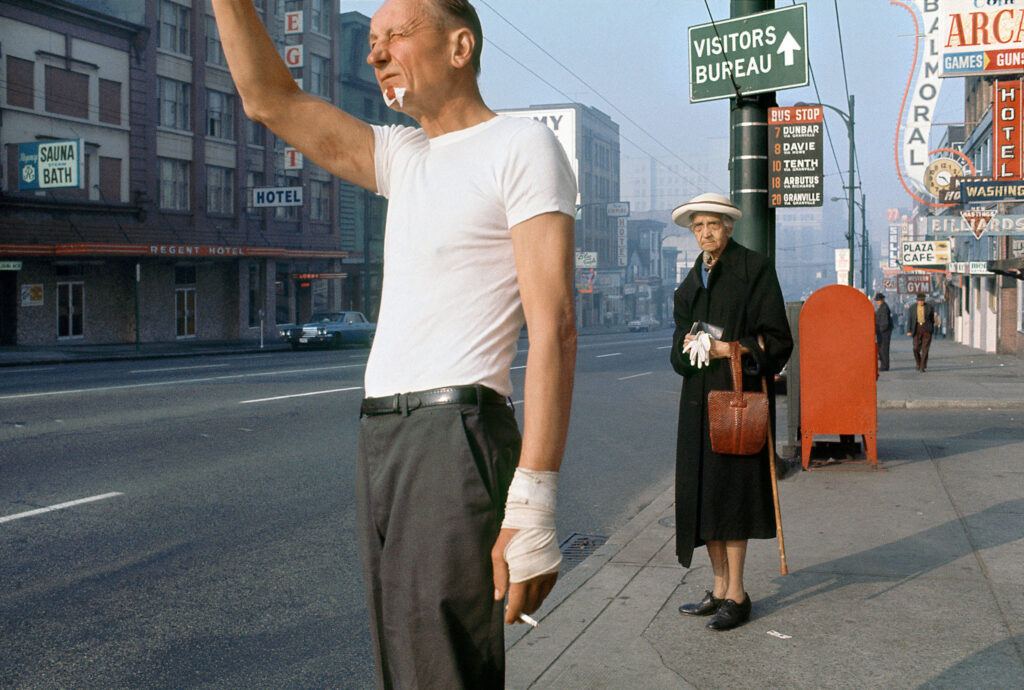3 Easy Facts About Street Photographers Shown
3 Easy Facts About Street Photographers Shown
Blog Article
Street Photographers - The Facts
Table of ContentsThe Main Principles Of Street Photographers Getting The Street Photographers To Work7 Easy Facts About Street Photographers ExplainedExamine This Report on Street PhotographersAn Unbiased View of Street Photographers
, a genre of photography that records daily life in a public place. The actual publicness of the setting allows the digital photographer to take candid pictures of strangers, frequently without their knowledge. Road digital photographers do not always have a social objective in mind, but they like to isolate and capture moments which could or else go undetected.He was influenced by numerous of those that influenced the street digital photographers of the 1950s and '60s, he was not chiefly interested in recording the spirit of the street., who worked side by side with digital photographers attempting to catch the significance of urban life.

Provided the fine top quality of his photographs and the breadth of product, engineers and musicians frequently acquired Atget's prints to use as referral for their very own job, though commercial passions were hardly his main motivation. Instead, he was driven to photo every last remnant of the Paris he liked. The mingled interest and necessity of his goal sparkle through, resulting in photographs that narrate his very own experience of the city, high qualities that anticipated road digital photography of the 20th century.
The Best Strategy To Use For Street Photographers
They expose the city through his eyes. His job and essential understanding of digital photography as an art kind worked as inspiration to generations of photographers that complied with. The next generation of road professional photographers, though they likely did not refer to themselves because of this, was ushered in by the photojournalism of Hungarian-born digital photographer Andr Kertsz.
Unlike his peers, Brassa made use of a larger-format Voigtlnder video camera with a much longer exposure time, compeling him to be a lot more calculated and thoughtful in his practice than he could have been if utilizing a Leica. (It is thought that he may not have been able to manage a Leica at that time, yet he did, however, make use of one in the late 1950s to take colour photos.) Brassa's photographs of the Paris underworld brightened by fabricated light were a revelation, and the collection of the series that he published, (1933 ), was a significant success.
Cartier-Bresson was a champ of the Leica camera and one of the very first photographers to optimize its capacities. The Leica allowed the digital photographer to communicate with the environments and to capture moments as they occurred - Street Photographers. read here Its relatively small size also helped the digital photographer fade into the history, which was Cartier-Bresson's preferred strategy
The Best Strategy To Use For Street Photographers
It is since of this basic understanding of the art of photo taking that he is commonly attributed with rediscovering the medium all over once more about a century because its creation. He took photographs for more than a half century and affected generations of digital photographers to trust their eye and instinct in the minute.
These are the concerns I shall attempt to answer: And then I'll leave you with my very own meaning of street digital photography. Yes, we do. Let's kick off with specifying what useful content an interpretation is: According to it is: "The act of defining, or of making something definite, distinctive, or clear".
No, absolutely not. The term is both limiting and misleading. Seems like a street photography should be images of a streets right?! And all street photographers, besides a handful of outright beginners, will totally value that a street is not the vital element to road photography, and in fact if it's a photo of a road with perhaps a couple of monotonous individuals doing absolutely nothing of interest, that's not road digital photography that's a picture of a road.
He makes a valid factor don't you think? Nonetheless, while I agree with him I'm unsure "candid public digital photography" will capture on (although I do kind of like the term "honest photography") due to the fact that "street digital photography" has been around for a long period of time, with numerous masters' names affixed to it, so I believe the term is below to stay.
Not known Details About Street Photographers
You can fire at the beach, at a festival, in a street, in a park, in a piazza, in a coffee shop, at a museum or art gallery, check in a city station, at an occasion, on a bridge, under a bridge ...
Yes, I'm afraid we terrified no choice! Without guidelines we can not have a definition, and without a meaning we don't have a style, and without a style we don't have anything to specify what we do, and so we are stuck in a "rules interpretation category" loophole! - Street Photographers
The Single Strategy To Use For Street Photographers

Report this page